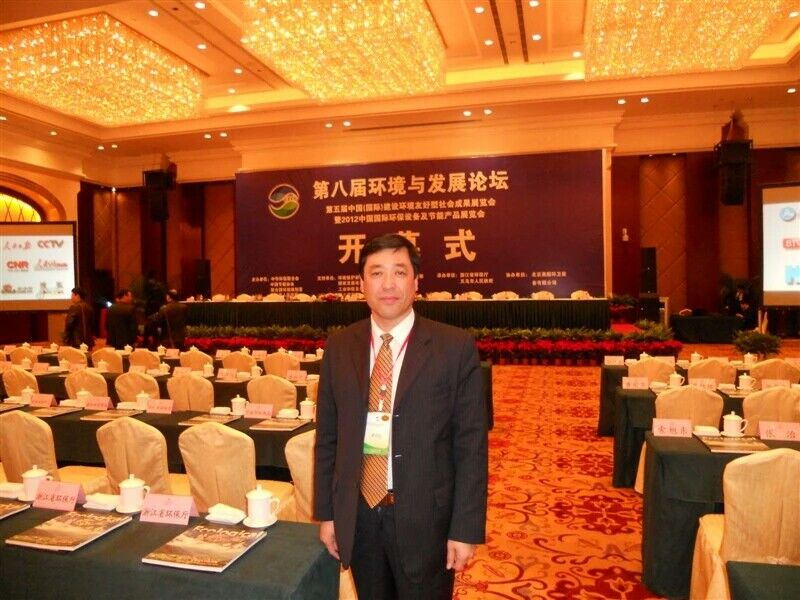 |
���H�Q(m��o)�� |
|
|
| �ӱ������Ɏ����]�������������շ���Ӣ�Z5��� |
|
��̎��������W(w��ng)������dl735.cn
�r�g��2010/5/21 17:38:00 |
Appendix 1
Study and research guide
Throughout this book you have been presented with legal and linguistic skills practice,
including in reading, writing, drafting and advocacy. Such practice should
assist in developing your competence in using legal English both in legal study and
in legal practice. The purpose of this section of the book is to provide you with a
further appreciation of the sources of law and their relative importance. Certain features
of the text of law and where to locate it will also be considered.
Sources of United Kingdom law
Legislation
United Kingdom (UK) law is primarily created by legislation. The sources of legislation
are:
European Union legislation
Legislation enacted by or delegated by the UK Parliament
The ultimate source of UK law is now legislation created by the European Union.
The UK largely lost ��sovereignty�� over its law-making process as a result of becoming
a signatory to the European Union (previously known as the European
Community) on 1 January 1973. In particular, the UK Parliament granted overriding
law-making authority to the European Union by enacting the European
Communities Act 1972. The EU has its own Parliament, its Secretariat being based
in Luxembourg, committee meetings usually being held in Brussels.
European Union law
Primary European Union (EU) law consists mainly of treaties. Rights provided under
primary EU law are directly enforceable through UK courts if domestic law
does not specifically grant those rights.
Secondary EU law takes the form of:
� Regulations: a Regulation is entirely binding upon the UK as a member state of
the EU. It is directly applicable in UK law without the need for the UK Parliament
to enact the regulation through domestic legislation. Regulations are directly
applicable, both against the state (known as being directly applicable)
and against individuals and companies (known as being horizontally applicable).
An example of a Regulation is the free movement of workers within the
EU regulation.
� Directives: a Directive imposes a binding duty on member states to implement
the provisions contained within the Directive. A Directive is not however directly
imposed. Instead, the member state is responsible for determining the form and
method by which to implement the provisions of the Directive into its domestic
law. A Directive is said to have ��vertical effect�� since it ��directs�� a member state to
incorporate the Directive into its own law.
� Decisions: these are binding and include decisions from:
(a) The Commission (based in Brussels, consisting of ��commissioners�� and which
represents the EU as a whole)
(b) Decisions of the European Court of Justice (ECJ) based in Luxembourg (e.g.
decisions in competition law cases)
� Recommendations and Opinions: issued by the Commission or the Council (consisting
of Ministers from member states and which adopts legislation proposed
by the Commission). Such Recommendations and Opinions are persuasive in
nature rather than binding. (The ECJ adjudicates on disputes between member
states relating to alleged violations of treaties as well as making rulings on the
correct interpretation of EU legislation.)
English (UK) law
UK legislation is created by the UK Parliament (Parliament). This legislation is in
the form of ��statutes��, also known as ��Acts of Parliament��. There is in addition a subordinate
source of law which is drawn-up under powers specifically delegated by
particular statutes. (For instance ��statutory instruments�� are a main source of this
��secondary�� legislation, often containing the ��small-print�� of a statute). There is no
written constitution in England whereby a Supreme Court is empowered to declare
a blatantly unfair Act of Parliament invalid (such as exists in the USA). (Also note
that in the US each state has its own law-making powers and justice system. There
is however an over-riding system of ��Federal law�� as well as a more centralised appeal
court system consisting of an Appeals Court and ultimately the Supreme
Court.)
Case-law
There is a general principle in English law that courts must interpret the wording
of legislation literally (i.e. by attributing the literal meaning to each word, regardless
of how perverse an interpretation that may lead to). Courts are provided
with some assistance in interpreting the meaning and intended purpose of legislation.
E.g.
� The statute may provide definitions of words or clauses used within the statute
� The Interpretation Act 1978 (which provides definitions for a range of standard
words and phrases commonly used in statutes)
� English dictionaries
� Hansard (transcripts of the actual debates by members of Parliament concerning
the particular legislation and its enactment)
Appendix 1 � Study and research guide
150
English courts are required to interpret legislation in accordance with the Human
Rights Act 1998. They are also required to interpret statutes in accordance with
European Union law. This means that UK courts are now adopting the European
approach to interpretation (i.e. by interpreting legislation in light of the intended
purpose of the legislation as opposed to purely on a literal interpretation).
There are many instances however in which the intended purpose or specific
meaning of legislation is in doubt and has to be further interpreted. Similarly, the
law often has to be interpreted in relation to specific circumstances. It is the courts
which then interpret the law. In doing so, an English court adheres to the doctrine of
binding precedent. This is a concept whereby a Judge is bound to rule consistently
with previous decisions by a higher court on similar points of law and circumstances
when making a finding in a particular case. It is very unusual however for
two cases to be exactly the same in terms of facts and circumstances and lawyers
will often try therefore to distinguish a previous court decision which is adverse to
their particular case. If satisfied that the present can be distinguished from an earlier
case (i.e. a precedent) then the precedent need not be binding on the present case in
regard to determining its decision.
Areas of law
In broad terms, English law can be classified into civil law and criminal law.
Civil law
Civil law is concerned with the legal rights and obligations of individuals and
organisations in relation to each other and includes a wide range of law including:
� tort law (e.g. the car crash case in Chapter 8)
� contract (e.g. the case in Chapter 7)
� employment law (Chapter 10)
� land law
� company and commercial law.
Thus the remedy in civil law usually involves monetary compensation, i.e. damages
and/or some other remedy such as an injunction.
Criminal law
Criminal law addresses law enforcement in the sense of the state or police authority
prosecuting individuals or organizations for having committed crimes.
Crimes can involve violence, for instance grievious bodily harm (GBH) and murder.
A crime can also be committed in the course of commercial activity however,
such as by committing fraud. In criminal law a Defendant is charged with a crime
and prosecuted. The prosecution is brought by a prosecutor. The Defendant will
plead guilty or not guilty. He or she will then be found guilty or not guilty by the
court, being convicted if found guilty and acquitted if found not guilty. Rather than
damages being awarded the Defendant will then be sentenced by way of punishment.
(Although the court may also make a compensation order, requiring the
convicted person to pay some monetary compensation to his victim.)
Appendix 1 � Study and research guide
151
The court system
Civil courts
The High Court
The High Court of England and Wales consists of three divisions, namely:
Chancery (Ch) Division; Family Division; Queen��s Bench (QB) Division.
The Chancery Division hears actions such as bankruptcy, copyright and mortgage
cases. The Family Division deals with matrimonial cases, i.e. divorce etc. The
Queen��s Bench Division deals with higher value and more complex civil cases (such
as tort cases for personal injury worth over £50,000) and breach of contract cases
(such as the case of Travelgraph v Matrix Printers in Chapter 7).
The County Court
There are approximately 250 County Courts throughout England and Wales. They
generally handle lesser value civil claims (e.g. personal injury cases worth under
£50,000 and breach of contract claims up to £15,000).
Tribunals
There are a range of tribunals for various matters such as immigration, rent reviews
and employment law cases. The latter are known as Employment Tribunals (you
considered an Employment Tribunal case in Chapter 10).
Court of Appeal (civil division)
Hears appeals from the lower courts, i.e. County and High Courts.
House of Lords
Ultimate UK appeal court. Appeals to the House of Lords (HL) are only possible on
a point of law. A HL case is usually heard by five ��Lords of Appeal in ordinary��
(more commonly referred to as ��Law Lords��).
European Court of Justice
A court or tribunal may refer a case to the European Court of Justice (ECJ) for clarification
of any aspect of EU law if necessary in order to deliver its judgment.
Criminal courts
Magistrates�� Courts
Generally hear less serious criminal cases
Crown Courts
Crown Court cases are heard in front of a Judge and jury, the Judge adjudicating
and directing on the law and a jury deciding on the facts of the case. Crown Courts
also hear appeals from Magistrates�� Courts.
Court of Appeal (criminal division)
Hears appeals from the Crown Court
Appendix 1 � Study and research guide
152
Appendix 1 � Study and research guide
153
Finding the law
UK statutes are published by Her Majesty��s Stationery Office (HMSO) as well as in
publications such as Halsbury��s Statutes (which summarises and explains English
law in straightforward English). There are also various series of law reports including
The All England Law Reports (All ER) and The Weekly Law Reports (WLR). (A law
report is a transcript of the court��s decision in a particular case). Quality newspapers
such as The Times and The Financial Times regularly report cases in abbreviated
form. Developing the habit of reading law reports will assist in further developing
your vocabulary. Electronic sources via the internet are however an increasingly
effective way of conducting legal research. Some of the most useful of these sources
are therefore provided in the following section.
Electronic sources
A number of ��on-line�� resources are fee-paying subscription services. However a
wide range of legal databases are available free on-line. The following is a nonexhaustive
list of legal resources available free on the internet. You should however
always satisfy yourself of the suitability of the sources you access.
www.curia.eu.int (ECJ judgments)
www.hmso.gov.uk
www.parliament.uk
www.lawreports.co.uk
www.courtservice.gov.uk (Court forms and judgments etc)
www.companieshouse.org.uk/
www.thelawyer.com/
There are also a number of ��link-sites�� and ��gate-ways�� which may assist in locating
useful legal websites. For instance:
www.ials.sas.ac.uk/eagle-i.htm (Institute of Advanced Legal Studies)
www.venables.co.uk/legal
www.bailii.org
www.barcouncil.org.uk (The Bar Council)
www.lawsociety.org.uk/home.law (The Law Society)
www.law.cam.ac.uk/jurist/index.htm
House of Lords
Final appeal venue for criminal cases. (Appeal must be on a point of law.)
Appendix 1 � Study and research guide
154
Law analysis and study
When researching law or undertaking the study of law (whether at undergraduate
or post-graduate level) you will obviously encounter statutes and case-law.
Reading statutes
The excerpt on p. 156 shows the first page of a typical statute, namely the Human
Rights Act 1998. Most statutes are referred to by their ��short title�� in this way. The longer
title which follows then describes in more detail the purpose and aims of the statute.
Reading case-law
Note carefully the name of the case. This includes the names of the parties
(Claimant��s name followed by Defendant��s name) followed by what is known as the
citation. This normally includes the year of the case report along with details of the
volume / page number of the law report series where the report can be located.
When referring to a case it is necessary to cite the case, in other words provide the
case citation, for example: Series 5 Software Ltd v Clarke (1996) 1 All ER 853 (indicating
the names of the parties and where the case can be found, i.e. in volume 1 of the
All England Law Reports at page 853).
When reading a case also note carefully the court which decided the case (taking
account of its authority, i.e. is it a High Court or a House of Lords decision). Many
case reports have a headnote which can be very useful since this provides a summary
of the facts and decision. It will also set out the fundamental legal principles on
which the judgment is based (known as the ratio decidendi).
When writing coursework etc. grammar remains important, as does the need to
use plain English which is clear in meaning and concise. As a general rule however
remember that academic English involves using the ��third person�� (e.g. ��he��, ��they��
and ��it�� etc. as opposed to ��I�� or ��you�� etc.) and the ��passive�� voice instead of the
��a(ch��n)ctive�� voice.
Finally, keep a written record of your legal research. The following form may
assist you with this.
Appendix 1 � Study and research guide
155
RESEARCH SHEET
Summary of the purpose of the research
Appendix 1 � Study and research guide
156
Search words (identify here the main area of law or subject of the problem �C e.g. if researching
law concerning car crashes words such as ��personal injury��, ��tort��,��negligence��
and ��a(ch��n)ccident�� would be relevant search words)
Research trail (details of cases read and other legal materials read such as statutes and
their sources)
Details of research findings and conclusions
(������վ��ʹ�ÈDƬ��������oע����վԭ��(chu��ng)����W(w��ng)���D(zhu��n)�d�����������վ���d��(n��i)���Թ������о���Ŀ���������猦���d��(n��i)���Ю��h������Ո(li��n)ϵ��վվ�L����վ����(bi��o)��ԭ��(chu��ng)�����֘ӻ���������վ�Ɏ��������������D(zhu��n)�d�rՈ��(w��)��ע����̎�����������t�����䷨��؟(z��)��������) |
��һƪ���ӱ������Ɏ����]�������������շ���Ӣ�Z6��
��һƪ���ӱ������Ɏ����]�������������շ���Ӣ�Z4���
|
 |
| �ھ���ԃ |
|
| (li��n)ϵ�҂� |
�Ԓ��13930139603 13651281807
QQ̖��373036737
�]�䣺373036737@qq.com |
|
|
|
|










